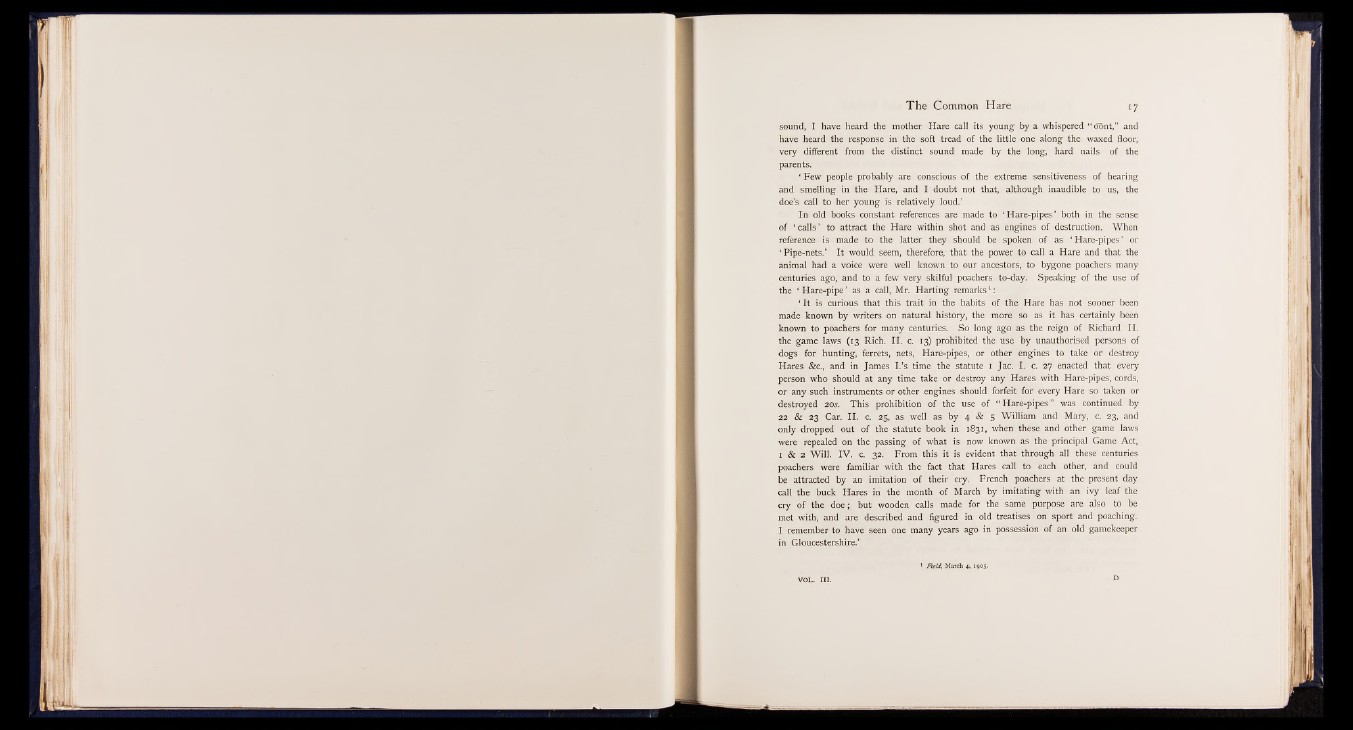
The Common Hare 1 7
sound, I have heard the mother Hare call its young by a whispered “ dont,” and
have heard the response in the soft tread of the little one along the waxed floor,
very different from the distinct sound made by the long, hard nails of the
parents.
‘ Few people probably are conscious of the extreme sensitiveness of hearing
and smelling in the Hare, and I doubt not that, although inaudible to us, the
doe’s call to her young is relatively loud.’
In old books constant references are made to ‘ Hare-pipes ’ both in the sense
of ‘ calls ’ to attract the Hare within shot and as engines of destruction. When
reference is made to the latter they should be spoken of as ‘ Hare-pipes ’ or
‘ Pipe-nets.’ It would seem, therefore,' that the power to call a Hare and that the
animal had a voice were well known to our ancestors, to bygone poachers many
centuries ago, and to a few very skilful poachers to-day. Speaking of the use of
the ‘ Hare-pipe ’ as a call, Mr. Harting remarks1:
‘ It is curious that this trait in the habits of the Hare has not sooner been
made known by writers on natural history, the more so as it has certainly been
known to poachers for many centuries. So long ago as the reign of Richard II.
the game laws (13 Rich. II. c. 13) prohibited the use by unauthorised persons of
dogs for hunting, ferrets, nets, Hare-pipes, or other engines to take or destroy
Hares &c., and in James I.’s time the statute 1 Jac. I. t. 27 enacted that every
person who should at any time take or destroy any Hares with Hare-pipes, cords,
or any such instruments or other engines should forfeit for every Hare so taken or
destroyed 205. T h is , prohibition of the use of “ Hare-pipes” was continued by
22 & 23 Car. II. c, 25, as well as by 4 & 5 William and Mary, c. 23, and
only dropped out of the statute book in 1831, when these and other game laws
were repealed on the passing of what is now known as the principal Game Act,
1 & 2 Will. IV. c. 32. From this it is evident that through all these centuries
poachers were familiar with the fact that Hares call to each other, and could
be attracted by an imitation of their cry. French poachers at the present day
call the buck Hares in the month of March by imitating with an ivy leaf the
cry of the doe; but wooden calls made for the same purpose are also to be
met with, and are described and figured in old treatises on sport and poaching.
I remember to have seen one many years ago in possession of an old gamekeeper
in Gloucestershire.’
1 Field, March 4, 1905.
VOL. III.